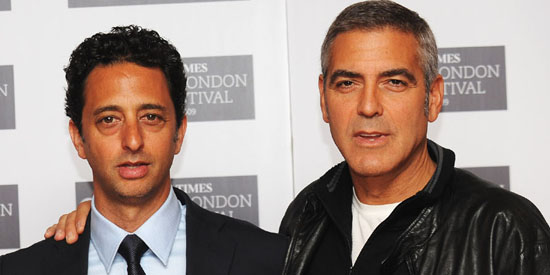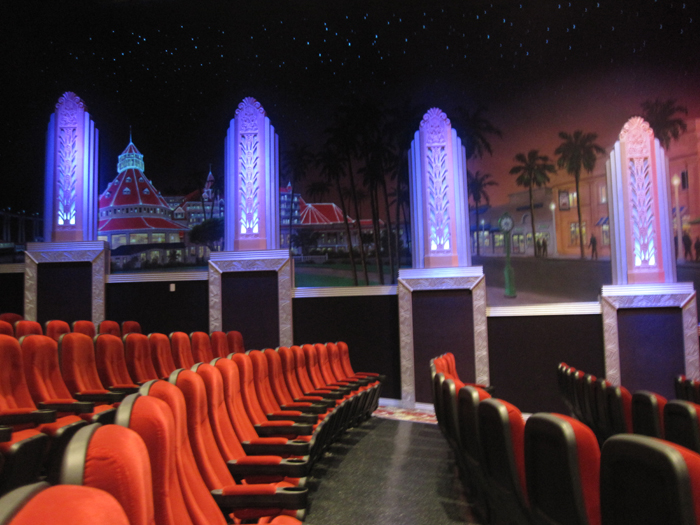

Grant Heslov and George Clooney team up to produce future movie called “Coronado High”.
This is one of those stories, true stories, that many Coronado locals don’t want to talk about – they are even less enthused about having Hollywood make a major motion picture about it. Some eCoronado.com members have shared personal memories and details about this case, but asked us not to write about it. We haven’t. They certainly didn’t want to name names, so we did some “Google research” and found out more details about why Hollywood is so interested this 30+ year-old Coronado crime ring. Here is a quick overview of the “Coronado Company” drug business that ran from 1972-1981 – yes, right here in Crown Town:
Former Coronado High School Spanish teacher Louis “Lou” Villar orchestrated one of the largest drug smuggling rings enlisting former CHS students. Nearly 100 tons of marijuana and hashish were imported from Mexico and the Orient. They made millions before getting caught by the DEA. Over 60 people were indicted and over 20 served time. One conspirator spent over five years in a Moroccan jail after getting caught. Even though Villar was the kingpin of the “Coronado Company”, he was able to avoid jail by becoming a witness against his former conspirators and even his lawyer Philip DeMassa.
UPDATE: Here is the Mike Wallace “60 Minutes” video on the “Coronado Company”.
Back in 2004, Union Tribune writer and CHS grad Logan Jenkins penned these words:
Twenty years ago, I was spellbound by the bizarre history of another drug ring that hailed from a high school Coronado, my alma mater.
Most of the names, and many of the faces, of the principal conspirators were familiar.
Most astonishing in the lineup was Louis Villar, whom I remembered as a hip young Spanish teacher who drove an old Corvette. He was also the coach of the swimming team, which won the CIF championship in 1964, if memory serves.
This charismatic figure would go on to become the CEO of the Coronado Company, which, next to the Hotel del Coronado, remains the most famous business enterprise in the island’s history.
By the early 1970s, Villar had dropped out of teaching and become a house-painting, pot-smoking beach savant everyone called “Pops.” Some of the local kids, former students of Villar’s, were making use of their considerable water skills by smuggling in kilos of Mexican marijuana. Pops was recruited to help negotiate with wholesalers in Tijuana.
Read the entire UT article here.
Here is a synopsis of the Coronado Company according to court documents:
In 1972, Louis Villar, Edward Otero, Paul Acree, and Lance Weber agreed to work as partners for the purpose of smuggling and distributing marijuana. This partnership became known as the Coronado Company. In its early years, this partnership conducted smuggling operations on a relatively small scale. As the size of the loads increased, employees were hired to help with the off-loading part of the operation. In 1977, Bob Lahodny joined the Company, replacing Weber as a partner.
Late in 1979, the Company began to plan a fifth smuggling operation. Lahodny contacted a previous supplier, Lux Phaksuwana, and his associate, defendant Bibbero, about procuring a load of Thai marijuana. In a series of meetings at Santa Barbara and San Francisco, Bibbero met with the partners of the Company to discuss the operation. It was agreed that Bibbero would buy seven tons of marijuana and ready it for shipment to the United States. The Company would oversee the transporting of the load to Neah Bay, Washington, and land the shipment by helicopter for warehousing and distribution. The financial terms of this agreement were that Bibbero and the Company would each pay 50% of the cost of the supply, and Bibbero and the Company would receive 40% and 60% of the load respectively.
After a series of mishaps, the off-loading operation was abandoned with only one ton of the load safely landed and warehoused. Six tons of marijuana were recovered by Drug Enforcement Administration (DEA) agents on the shores of Neah Bay. Bibbero successfully renegotiated the division of the salvaged marijuana and received 45% of the load.
During the spring and summer of 1981, Bibbero met Villar and other partners at Santa Barbara, Palo Alto, and LaCosta, California, to plan a sixth smuggling operation. Because of the debacle at Neah Bay, it was agreed that Bibbero would receive more than half of the load. Bibbero also succeeded in getting a friend, Joe Siegfried, onto the off-loading crew so that Bibbero could maintain closer contact with the off-loading operation. The landing was planned for Bear Harbor, California. Marshall was recruited to work as a crew member and arrived at the site several weeks early to help prepare for the off-loading operation.
When the boat transporting the marijuana had engine trouble near Japan, Bibbero loaned the Company $25,000 to cover the cost of repairs and was scheduled to receive 100% interest on this loan.
A six-ton load was successfully landed at Bear Harbor in October, 1981, and transported to a house at Arcata, California, where it was weighed and packaged. Marshall participated in the off-loading. Bibbero stayed at a hotel in Eureka during the operation. He later arrived at the Arcata house with Siegfried, congratulated the crew members, and departed. Sometime after the operation was completed, Lahodny hosted a victory party, which was attended by Bibbero and Marshall.
On August 3, 1982, a federal grand jury in the Southern District of California returned a three-count indictment against Bibbero, Marshall, and twenty-five other individuals pertaining to the drug smuggling operation. Count one charged Bibbero, Marshall, and twenty-five others with conspiracy to possess marijuana, exceeding 1000 pounds, with intent to distribute in violation of 21 U.S.C. Secs. 841(a)(1), 841(b)(6), and 846 (1982). Count two charged the same individuals with conspiracy to import marijuana with intent to distribute in violation of 21 U.S.C. Secs. 952, 960, and 963. Count three charged Bibbero and twelve others, not including Marshall, with possession of 3000 pounds of marijuana with intent to distribute in violation of 21 U.S.C. Sec. 841(a)(1).
The district court divided the twenty-seven defendants into three groups and ordered three separate trials. The defendants were tried as a separate group, and judgments were entered after the jury found Bibbero and Marshall guilty as per the indictment. The defendants filed a timely appeal from the district court’s judgment order.
Here is another summary taken from court documents:
From 1977 to 1981, a large-scale drug smuggling organization known as the “Coronado Company” imported and distributed approximately twenty-four tons of marijuana from Thailand. More than twenty-five persons participated. The five appellants here, Robert Barker, William McKinley, Jeffrey Engle, Jason Engle, and George Timmons, were each charged with multiple substantive and conspiracy counts stemming from their involvement in the Company’s importation of five tons of marijuana in 1981.
According to a 1986 LA Times article:
Founded in the early 1970s by high school buddies who smuggled drugs from Mexico on surfboards, the Coronado Company became one of the West Coast’s biggest importers of “Thai stick” marijuana from the Orient.
Also from the LA Times:
At one time, Villar, the ring’s mastermind, was DeMassa’s client. In 1982, Villar, who is now 46, pleaded guilty to three counts of conspiracy to import marijuana and was sentenced to 10 years in federal prison.
But five months later, Villar became the government’s star witness, and he soon implicated DeMassa and others in the conspiracy and avoided going to jail.
Click here to read an excerpt from “The Mammoth Book of Drug Barons” that talks about the Coronado Company.
The Well Fed Muse interviewed author David Corbett and he shared this about a story he wrote about the Coronado Company:
I worked on a number of interrelated marijuana smuggling cases linked to a group of characters out of San Diego who called themselves the Coronado Company. They were Navy brats for the most part, comfortable with boats and the sea, and began dealing pot in high school, crossing into TJ for party-size loads, nothing major. But little by little the demand grew and so did their nerve, until they got to the point someone needed to speak Spanish. So they recruited their high school Spanish teacher, a walking mid-life-crisis named Lou Villar, into the company. They began doing major smuggling runs up from Mexico, then teamed up with some Vietnam vets yearning for a little adventure who had contacts in Southeast Asia. They became the largest smuggling operation on the West Coast, and were more wild than evil. If they’d lived in the 17th century they would have sailed around the world for treasure and fame. They were just born four hundred years too late.
Read the entire interview here.
Coronado locals can’t bury this story anymore. Yesterday, The Wrap (a Hollywood entertainment website) published an exclusive story giving some of the first details about this future project that is being led by two talented producers that just won Oscar gold for “Argo”: George Clooney Reteaming With ‘Argo’ Journo on Drug Smuggling Project.
This is old Coronado news for locals, but with the new movie and heavyweights such as Clooney and Hevlov producing it, this 30-year-old news may just be playing at Village Theatre right here in Coronado.






I was in a band with a friend of mine who had grown up in Coronado and must have had some connection to the Company because he provided us with our first experience of Thai stick in 1980. I remember taking my first hit, and suddenly it seemed as if the atmosphere had turned a lovely shade of blue. It tasted great, too. That was the end of that rehearsal!